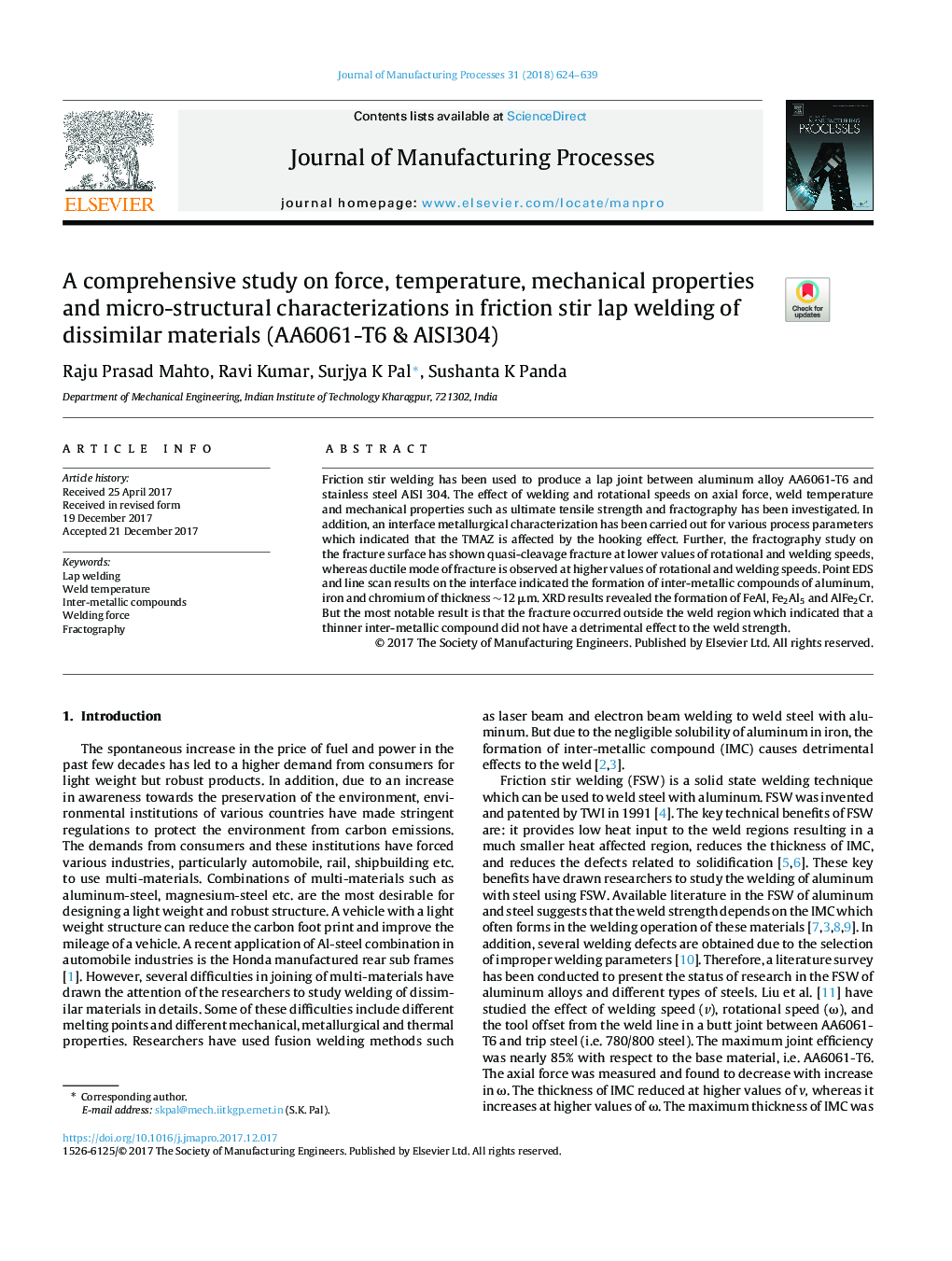| Article ID | Journal | Published Year | Pages | File Type |
|---|---|---|---|---|
| 8048060 | Journal of Manufacturing Processes | 2018 | 16 Pages |
Abstract
Friction stir welding has been used to produce a lap joint between aluminum alloy AA6061-T6 and stainless steel AISI 304. The effect of welding and rotational speeds on axial force, weld temperature and mechanical properties such as ultimate tensile strength and fractography has been investigated. In addition, an interface metallurgical characterization has been carried out for various process parameters which indicated that the TMAZ is affected by the hooking effect. Further, the fractography study on the fracture surface has shown quasi-cleavage fracture at lower values of rotational and welding speeds, whereas ductile mode of fracture is observed at higher values of rotational and welding speeds. Point EDS and line scan results on the interface indicated the formation of inter-metallic compounds of aluminum, iron and chromium of thickness â¼12â¯Î¼m. XRD results revealed the formation of FeAl, Fe2Al5 and AlFe2Cr. But the most notable result is that the fracture occurred outside the weld region which indicated that a thinner inter-metallic compound did not have a detrimental effect to the weld strength.
Related Topics
Physical Sciences and Engineering
Engineering
Industrial and Manufacturing Engineering
Authors
Raju Prasad Mahto, Ravi Kumar, Surjya K Pal, Sushanta K Panda,
